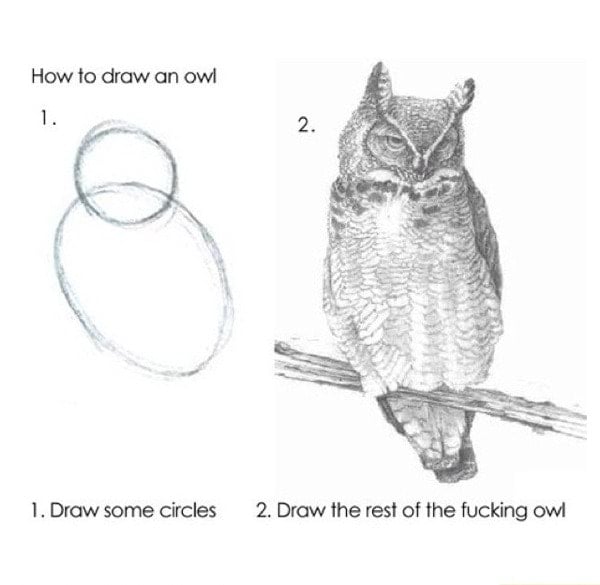Na, names are about pronunciation (how you call someone). Written letters are an approximation of that. You can’t pronounce a newline, so there’s that.
- 8 Posts
- 79 Comments

 291·9 days ago
291·9 days ago“Vamos a playa” by Righeira carries a lightweight, upbeat tune that vacationers might hum on the way to the beach. But the Spanish lyrics reveal that it’s about the devastation left behind by nuclear armaments. And the schism between trying to live an ordinary life whilst having a nuclear Damocles sword waver over your head. That it became such a world wide hit makes it all the more ironic. I love it all the more for it.
Lovely, I tried the decky plugin for this before but it was somewhat unstable and also caused games to slow down while recording. I wonder what the storage requirements will be for recording, let’s say, a buffer of three minutes at all times? 🤔
deleted by creator

 5·15 days ago
5·15 days agoTo those saying it’s likely hardware damage: nope, luckily not. Booting into a different USB image doesn’t produce this. But booting into tone same ISO produces these errors every time (it starts out normal and progressively gets worse over time).

 5·16 days ago
5·16 days agoOK, thanks for the hint. I just found out that you will only be prompted to update if you:
- power everything off (shut down deck completely, don’t just sleep it)
- remove all peripherals connected to the dock (except network cable if you use that for your connection)
- start the deck
- if there are any updates for the the dock, they should show in the options of gaming mode
here’s to hoping the updates will allay the display issues

 4·16 days ago
4·16 days agoI vaguely remembered it offering me updates when I first set the dock up (purchased the dock much later then the deck). I’ll make sure I have the latest version.

 1·1 month ago
1·1 month agoThere was some degree of standardization. Especially for important legal and religious texts alteration, even if accidental, was considered a sin/vice.
Scribes very often simply had to produce 1:1 copies of existing texts. So the standard was right in front of them.

 2·1 month ago
2·1 month agoYou wouldn’t think how far clerical errors could go when it was laboriously copied by hand by exhausted monks in candlelight.
The whole Mary was a virgin thing (aka immaculate conception) was started because someone mistranslated young woman as (sexual) virgin. In some languages those terms are really close (even today for example in German: junge Frau Vs Jungfrau).

 2·1 month ago
2·1 month agoTo be fair some languages like English or French have so horrendous and outdated orthography that I’m not going to fault the writers.
Writers. Why is there even a W in that word still? Ridiculous, write?

 73·1 month ago
73·1 month agoI initially wrote ‘temptor’ in the title but then double checked. Not today, Titivillus.
It’s quite relevant if you consider that coal mining is concentrated to a much smaller area really. Besides the destroyed habitat, the pollution, the dangers of sinkholes and the cost of renaturation you also have to contend with rain and ground water constantly filling in the mining pits.
Don’t know about the UK but in West Germany’s Rhein-Ruhr area, a former coal mining hotspot, the energy used to operate the pumps that keep the water out will eventually be greater than the energy gained from burning all the coal. Can’t find a source on the quick but I think it might have happened already. Of course it’s not a simple subtraction as all that energy was used to generate more infrastructure and capital that can now pay for the pumps. According to this German source their operation costs around 300 million euros yearly which gives you a rough idea of just how expensive that is.
Nice. I’m wondering how often this cycle has played out so far …?
This has some real draw the rest of the fucking owl vibes, well done.

Ideally you’ll adjust both in game settings and deck settings for each game with in-game settings taking precedence as they give you access to fine tuning custom tailored to that game. The deck settings are great to tinker with when you want longer battery life especially. If it’s inside the dock and charging while you play you needn’t worry much about optimization (frame rate limit, heat limit, half rate shading, etc.) and can leave it at the sensible defaults.
The Steam Deck per-game control layout is very helpful for games that don’t come with native controller support or those that don’t let you rebind controls inside the game itself.
I don’t own the games you mention, so I can’t suggest specifics but my general way of setting up a game is:
- install the game and get it running at all
- use in-game options to find a resolution and layout comfortable from your preferred playing posture/position
- enable frame rate overlay in the steam settings
- start with default or auto detect settings for graphics or look up what others recommend online in sites like protondb. if you hit a comfortable frame rate (40-60+ for me personally) keep increasing the graphics quality settings in game as long it remains fluid to play. Don’t need to do it all in one session. I usually minimally increment the graphics settings at the start of each gaming session and simply revert once it’s no longer fluid.

 162·3 months ago
162·3 months agoWhile mosquito bites are unpleasant in themselves due to the itching and swelling I don’t think it’s common for cultures to have worked out the causal relationship between mosquitos and diseases like malaria. But I’d be happily educated otherwise.

 6·3 months ago
6·3 months agoSaudi Arabi is hostile to Iran (as is Israel) too.








Y̴̥͉͕͌̀ǫ̴̗̅̕u̵̱̾̋͐̚ ̷̡͕͈͛̇h̴̳̱̘̆ä̶̼́̕ṽ̷̬͕è̷͓̰̔̌ ̸̪͋m̷͍͎͙̂́̔ͅy̷̰̘̎́̉ͅ ̷̳͒v̷̭̕o̷̢͚̟͇͒̃͐̕t̴̪̙͗̐͆́ë̶̦͗ ̵̗͌̅p̶̰̫͛̑r̷̨͛̏̈́͝e̷͇͍̋̚͜s̸̳͙̒͘î̶̞̍̍̋͜ͅd̴̰̭͚̞͗ě̶̯̖n̶̩̿̕t̶͎͉̂ ̵̦͂̍̀Z̵̧̲̦̹̾͋a̴̒̑ͅl̷͇̘̝̬͒̊͝ǵ̴̹̣͖’̷͂͜o̴̢͔̱̔ò̷̧͛!̷̦̎͑͆͘ ̵̺̼̜̃̑